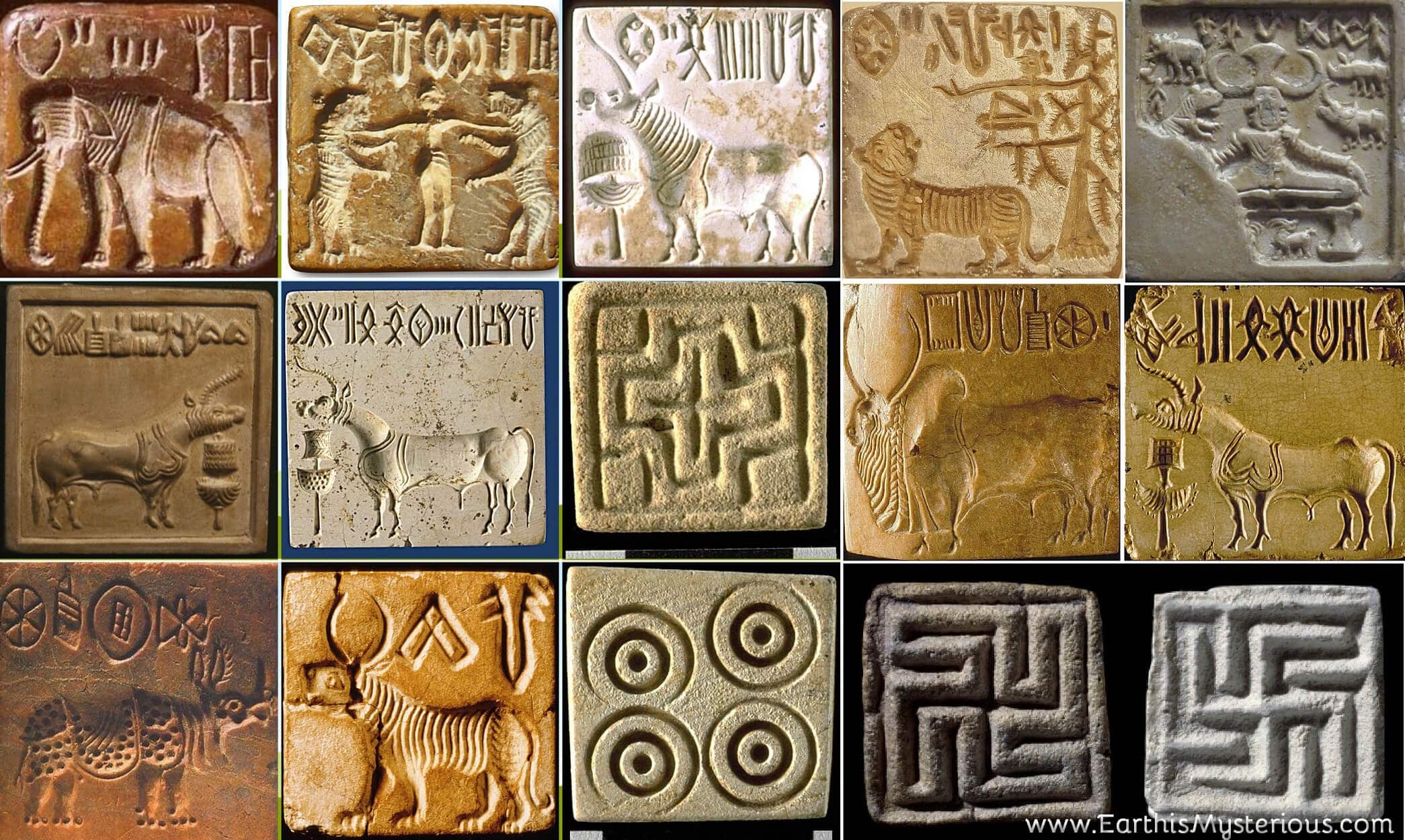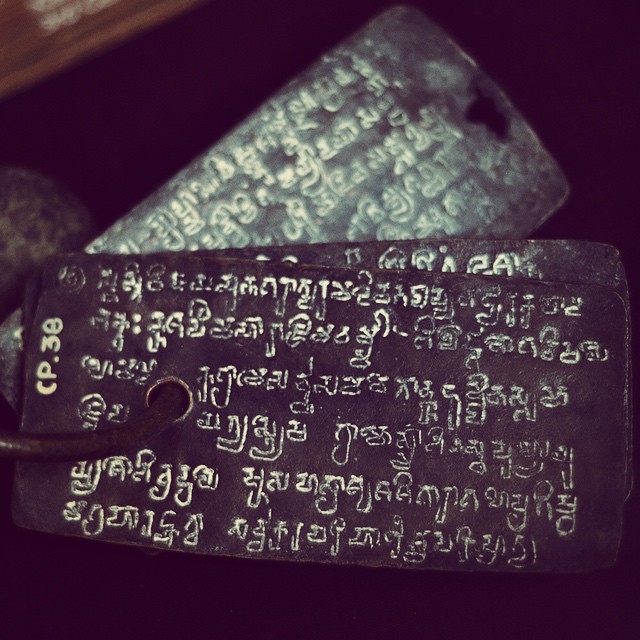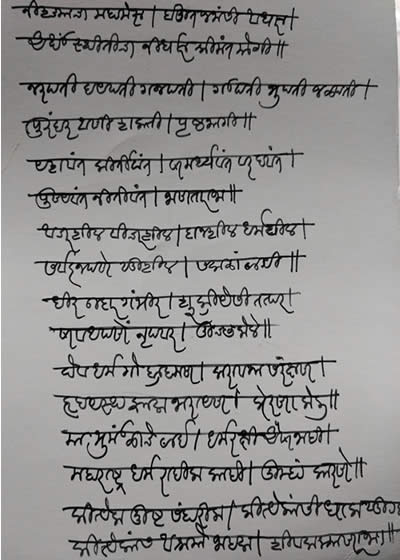
Contributor
The Lost Scripts of India
India is a linguistic hub where people know and speak multiple languages - from Hindi, Bengali, Tamil, Marathi to Sanskrit. But, not many know the origin and history behind them and their scripts. So, we have rounded it up for you.
Have you ever wondered how letters and symbols would have come into being? While the English alphabet originates from the Latin script, other Indian languages have different roots which have evolved over time into what we read and write today.

India has numerous scripts, each of them pertaining to a specific region. According to The People’s Linguistic Survey of India, there are over 66 distinct scripts in more than 780 languages in the country.
Well, amongst these, Bramhi is the primary or umbrella script which was deciphered by James Princep in 1937 and marks the origin of the present day ones such as Devanagari, Bengali, Tamil, Malayalam, etc. But, there are a slew of them that are not used anymore. So, let’s find out more.
1. Indus Script
Also known as the Harappan script, this script was used by people in the Indus Valley civilization. While some historians are of the opinion that the Indus script is the predecessor of Brahmi script, it follows the Boustrophedon style, which is written in one line from left to right and the next from right to left.

2. Gupta Script
The Gupta script or the late Brahmi script was used to write Sanskrit during the Gupta Empire. It is believed to have been derived from the Brahmi script and then given rise to Nagari, Sarad, Devanagari, Gurmukhi (Punjabi), Bengali-Assamese and the Tibetan script.
3. Kharosthi Script
The Kharoshthi script was predominantly used in the Gandhara region and was applied to write Gandhari Prakrit and Sanskrit. It is believed that it was introduced during the 3rd century BCE but later dwindled in 3rd century CE.
4. Sarada
Sharda script belongs to the Brahmic family of scripts and was commonly used between the 8th and 12th centuries in the north-western regions of India to write Kashmiri and Sanskrit. Over a period of time, it was only used in Kashmir and now is rarely used by anyone. Some Kashmir Pandits still use this for religious or ceremonial purposes, but it is quite uncommon now.
5. Mahajani
The Mahajani script was a mercantile script used for writing accounts and maintaining financial records in Marwari, Hindi and Punjabi. It was derived from the Landa script which in turn is thought to have evolved from the Sarada script.
6. Kalinga script
Modern day Odisha was earlier called Kalinga and hence the script was referred to as the same. Considered to be an ancient form of Oriya, the Kalinga script is very similar to Brahmi. Nevertheless, it is now defunct and the Oriya language is derived from a Bengali script.

7. Modi script
The Modi script was used to write Marathi till the 20th century. Subsequently, it was used for administrative purposes in the state of Maharashtra. The Britishers then replaced it with the Balbodh style of Devanagari.

Modi script (Representational image / Image credit: Omniglot)
8. Grantha
Considered to be one of earliest scripts to originate from Bramhi, the Grantha was widely used between the 6th century and 20th century. Malayalam and Sinhala, the primary language in Sri Lanka, were derived from Grantha. Pallava, an offshoot of Grantha, was introduced to Indonesia by Indian merchants, and it became the predecessor for many South-Asian scripts.
Many of the ancient Indian scripts are not used widely anymore. But this does not mean they are not significant today. They have played a big role in paving the way for modern day scripts and languages.
Edited by Aparna Chandrashekhar and Hiba Beg
Cover image illustration by Jyothi Syam
Some links and resources to help you learn more about ancient scripts:
Contributor
28th Sep 2021•4 mins read
The Lost Scripts of India
India is a linguistic hub where people know and speak multiple languages - from Hindi, Bengali, Tamil, Marathi to Sanskrit. But, not many know the origin and history behind them and their scripts. So, we have rounded it up for you.
Have you ever wondered how letters and symbols would have come into being? While the English alphabet originates from the Latin script, other Indian languages have different roots which have evolved over time into what we read and write today.

India has numerous scripts, each of them pertaining to a specific region. According to The People’s Linguistic Survey of India, there are over 66 distinct scripts in more than 780 languages in the country.
Well, amongst these, Bramhi is the primary or umbrella script which was deciphered by James Princep in 1937 and marks the origin of the present day ones such as Devanagari, Bengali, Tamil, Malayalam, etc. But, there are a slew of them that are not used anymore. So, let’s find out more.
1. Indus Script
Also known as the Harappan script, this script was used by people in the Indus Valley civilization. While some historians are of the opinion that the Indus script is the predecessor of Brahmi script, it follows the Boustrophedon style, which is written in one line from left to right and the next from right to left.

2. Gupta Script
The Gupta script or the late Brahmi script was used to write Sanskrit during the Gupta Empire. It is believed to have been derived from the Brahmi script and then given rise to Nagari, Sarad, Devanagari, Gurmukhi (Punjabi), Bengali-Assamese and the Tibetan script.
3. Kharosthi Script
The Kharoshthi script was predominantly used in the Gandhara region and was applied to write Gandhari Prakrit and Sanskrit. It is believed that it was introduced during the 3rd century BCE but later dwindled in 3rd century CE.
4. Sarada
Sharda script belongs to the Brahmic family of scripts and was commonly used between the 8th and 12th centuries in the north-western regions of India to write Kashmiri and Sanskrit. Over a period of time, it was only used in Kashmir and now is rarely used by anyone. Some Kashmir Pandits still use this for religious or ceremonial purposes, but it is quite uncommon now.
5. Mahajani
The Mahajani script was a mercantile script used for writing accounts and maintaining financial records in Marwari, Hindi and Punjabi. It was derived from the Landa script which in turn is thought to have evolved from the Sarada script.
6. Kalinga script
Modern day Odisha was earlier called Kalinga and hence the script was referred to as the same. Considered to be an ancient form of Oriya, the Kalinga script is very similar to Brahmi. Nevertheless, it is now defunct and the Oriya language is derived from a Bengali script.

7. Modi script
The Modi script was used to write Marathi till the 20th century. Subsequently, it was used for administrative purposes in the state of Maharashtra. The Britishers then replaced it with the Balbodh style of Devanagari.

Modi script (Representational image / Image credit: Omniglot)
8. Grantha
Considered to be one of earliest scripts to originate from Bramhi, the Grantha was widely used between the 6th century and 20th century. Malayalam and Sinhala, the primary language in Sri Lanka, were derived from Grantha. Pallava, an offshoot of Grantha, was introduced to Indonesia by Indian merchants, and it became the predecessor for many South-Asian scripts.
Many of the ancient Indian scripts are not used widely anymore. But this does not mean they are not significant today. They have played a big role in paving the way for modern day scripts and languages.
Edited by Aparna Chandrashekhar and Hiba Beg
Cover image illustration by Jyothi Syam
Some links and resources to help you learn more about ancient scripts: